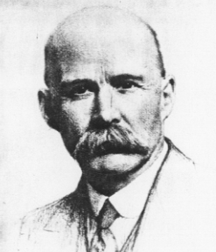


British Engineer Sir Thomas Edward Stanton entered Owens College, Manchester, in 1888 and followed the engineering curriculum at the Whitworth Laboratory under Osborne Reynolds. After taking the degree of B.SC. in 1891 at Victoria University, with first-class honors, he continued to work in Reynolds' laboratory, at first as a Junior and later as Senior Demonstrator until 1896. From 1892 until 1896 he was resident tutor in mathematics and engineering at the Hulme Hall of Residence, Manchester. In June 1896, Stanton obtained a post as Senior Assistant Lecturer in Engineering at University College, Liverpool, under Professor Hele-Shaw. In December 1899, he became a Professor of Engineering at Bristol University College and Superintendent of the Engineering Department of the National Physical Laboratory in Bristol in July 1901. He held this post until his retirement from official duties in December 1930 at the age of 65 and just one year before his death. Stanton's main field of interest was fluid flow and friction and the related problem of heat transmission. From 1902 to 1907 he executed a large research program which focused upon wind forces on structures, such as bridges and roofs. After 1908, the year when the Wright Brothers made their first aerospace flights in Europe, Stanton devoted himself to problems of aeroplane and airship design and the dissipation of heat from air-cooled engines. |

All web page HTML © by Richard Culham
Most recent update: 28-03-04